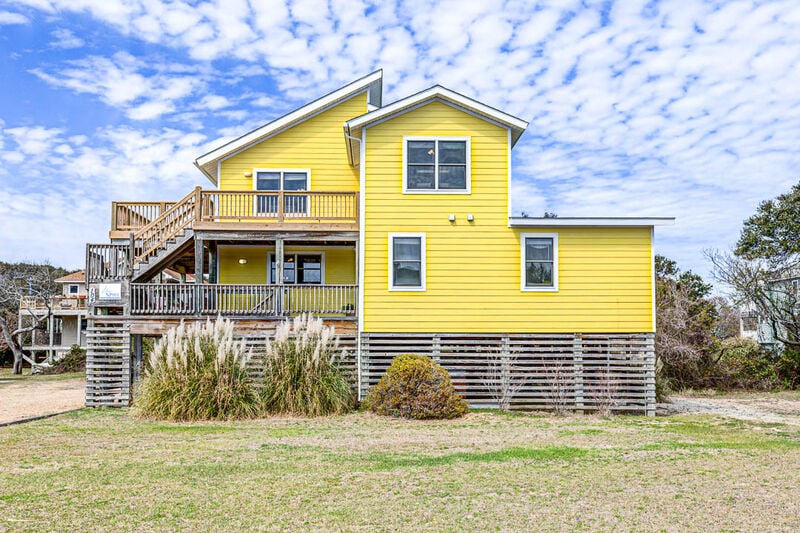
From freedom fighters to coastal rescuers, African Americans have played a prominent role in NC Outer Banks history. And now there's a self-guided trail that takes you through the whole thrilling story, with memorable stops at more than 30 historic places.
Officially launched in 2021, the African American Experience of Northeast North Carolina promotes greater awareness of African American contributions throughout the coastal corridor. Some of its most fascinating sites are located right on the Outer Banks. Here's a look at a few.
Richard Etheridge and Pea Island Lifesaving Station Sites, Manteo
Born into slavery in 1842, Dare County native Richard Etheridge went on to become the first African American commander of a United States Lifesaving Station – the Pea Island Station in Manteo, famous for its all-black crew.
As keeper of the station between 1880 and 1900, Etheridge faced tremendous obstacles, including local hostility. Soon after he took control at Pea Island, the station was burned to the ground. But Etheridge had military training – as well as expertise as a surfman – and he knew how to use these strengths to rebuild, achieve, and prevail. During the Civil War, he had served with the Union Army's legendary Buffalo Soldiers, eventually becoming a sergeant. After the war, he had honed his skills as a fearless waterman.
At Pea Island, Etheridge managed his crew with military precision. And, one fateful night, all his hard work paid off.
On October 11, 1896, a savage storm struck the Outer Banks, driving the schooner E.S. Newman aground in the shallows, where raging winds and waters lashed its sides. The storm was so fierce that Etheredge's seven-man team couldn't shoot a rescue line or row a boat out to the hapless ship.
So, instead, they formed a human relay.
Attached to each other with heavy lines, the strongest surfmen waded out through the violent waves. Meanwhile, the rest of the surfmen remained ashore, holding tightly to the lines. When the rescuers reached the Newman, its crew let down a ladder. Battling stormy swells, the Pea Island surfmen carried each passenger down onto the beach, beginning with the captain's little daughter. By 1 a.m., they'd managed to rescue all nine passengers, including the captain himself. It was one of the most successful rescues in North Carolina history.
Eventually the Pea Island Lifesaving Station became part of the United States Coast Guard. In 1947, it was decommissioned. But today you can still visit historic spots commemorating Richard Etheridge, the valiant Pea Island surfmen, and the storied Newman rescue, including:
- Pea Island Cookhouse Museum (622 Sir Walter Raleigh Street, Manteo): Open Saturdays from 11 a.m. to 3 p.m. – and other days by appointment – this recently renovated museum is housed in the actual building that served as the cookhouse for the Pea Island Lifesaving Station. Here you'll discover the E.S. Newman's weathered signboard, a Lyle gun used by the Pea Island crew, and a wealth of other artifacts.
- Richard Etheridge Statue (at the traffic circle connecting Bideford and Sir Walter Raleigh Streets, Manteo): Sculpted by renowned artist Stephen H. Smith, this towering bronze statue shows a resolute Keeper Etheridge gripping a massive oar.
- Pea Island Marker and Etheridge Gravesite (374 Airport Road, Manteo): Right outside the walkway to the North Carolina Aquarium you'll see an impressive marker honoring the achievements of Etheridge and his crew. Nearby you'll find the graves of Etheridge and his family.
- Commemorative Paintings: Inside the aquarium itself, you can view a series of paintings by African American artist James Melvin depicting Richard Etheridge and his heroic crew.
- Herbert M. Collins Boathouse (next to the Pea Island Cookhouse): Named in honor of former Lieutenant Herbert Collins, the last Pea Island Station Keeper, this authentic wooden structure houses a genuine Monomoy-type surfboat – the same kind of boat the keepers used during their daring rescues.
Hotel de Afrique, Waystation on the Underground Railroad
The story of the Hotel de Afrique goes back to the Civil War.
After Fort Hatteras fell to Union forces in 1861, fugitive slaves started arriving at Hatteras Island. To house them, the Union Army constructed a dozen barracks, which came to be known collectively as the Hotel de Afrique.
These structures no longer stand, but you can still see the place where they stood, right beyond the main parking lot at the Graveyard of the Atlantic Museum at 59200 Museum Drive in Hatteras. An imposing monument marks the spot, with a plaque retelling the riveting story of the famous Civil War battle and the construction of Hotel de Afrique. The site itself is part of the National Underground Railroad Network to Freedom.
So Much More to Explore
You'll find additional OBX spots steeped in African American history, including:
- Island Farm, Manteo's interactive "living history" site, where a cook named Crissy Bowser once built her cabin home with her own bare hands
- Fort Raleigh National Historic Site, where you can learn about the famous Roanoke Island Freedmen's Colony
And more! So, pack the car, gather the family, and head to the Outer Banks.









